Over the last three decades, the US has fought three main wars in the Middle East and Central Asia. The first was in 1991, and it was about a battle to dismiss Iraqi forces from Kuwait which led to a conclusive victory. The second war was the attack of Afghanistan in 2001 and the third war was in 2003 in Iraq I and they weren’t virtually as evident.
The US military didn’t want the same mistake that the Soviet Union made in Afghanistan during the 1980s to happen again, being trapped in an unending guerilla war. Therefore, the Taliban regime was successfully defeated, however, Osama bin Laden was let to escape. An instant military triumph was followed after years of killing in Iraq
Therefore, during the first war, what did the US do right and what did they do wrong in the campaigns after? A small number of people are better placed to interpret American tactics more than Jim Mattis who was the general that commanded Marines in the three wars. In this book summary, we will look at Mattis profession in the Marines and discover what led to the US military planning.
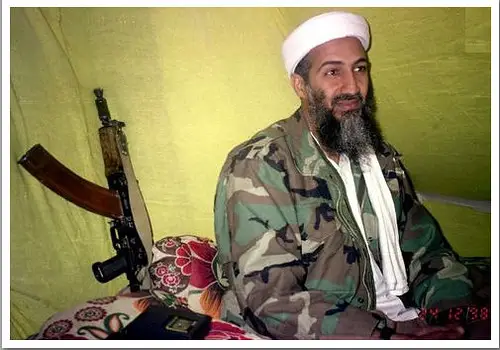
1 – Jim Mattis was an untroubled youth and he discovered his sense of purpose in the Marines.
During the winter of the year 1971, Jim Mattis a carefree graduate of history had close contact with death. He was newly out of college and wasn’t sure about his next step, Mattis decided to go hiking at the hills of Washington state. He was looking down at the Columbia River from the icy ridge when he tripped and fell down a ravine. He could have been easily dead by that fall. Incredibly, he didn’t die, he only had a few cracked ribs.
Mattis had spent the previous two summers at the Marine Officer Candidates School where he was training. While he cleaned himself off in that icy ravine, he remembered what a Vietnam veteran said at school, “We don’t have the chance to decide when we die, however, we can select how we come across death.” That was a life-changing point for him. Mattis came to the realization that he wanted to have his career with men similar to that wise soldier.
The Marines represented two things which are for duty and adventure. Both of which formed Mattis’ background. Mattis was born in Richland, Washington in the year 1950 and he grew up in the midst of soldiers and military engineers. They came to that vicinity to supervise the building of the Hanford reactors which is a nuclear production that is important to the Manhattan Project, America’s idea to create an atomic bomb during World War II. Richland was swayed by their civic-minded patriotism and their extreme commitment.
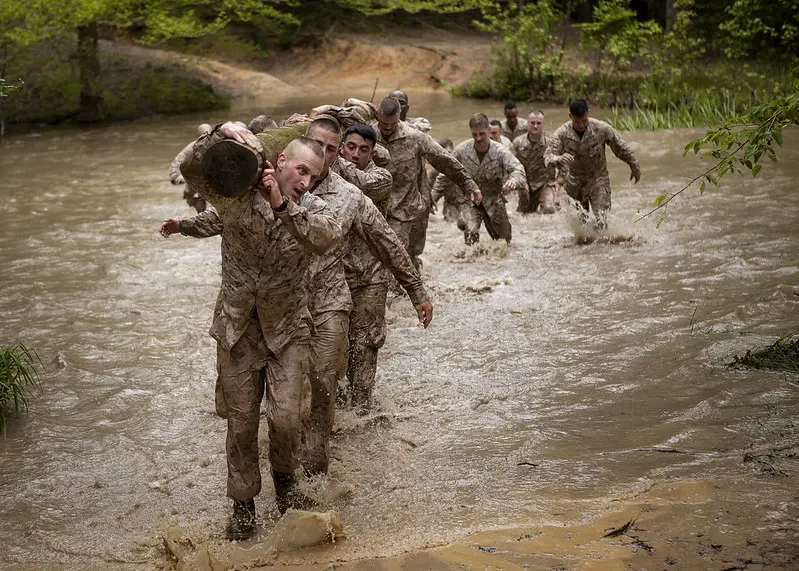
Also, Mattis’ parents supported his sense of adventure. When he was a boy, he would hunt down rabbits in the hills of their environment with an ancient 22 rifle. When he was 13, he started hitching around America’s western states. Anytime he was home, he read books from his parents’ wide library and his favorite was Hemingway followed by Faulkner.
Mattis registered at Central Washington State College in 1968. He was an average student who spent the majority of his partying instead of studying history. After one occurrence, a judge even told him to go and stay in the local jail during weekends which was a sentence for underage drinking.
The summer officer training program in Quantico, Virginia, offered a thing that university hadn’t offered and that is a sense of purpose. It was controlled by sergeants who had just gotten back from Vietnam, this course drove Mattis to his boundaries. However, he was stubborn. He declined an offer of a plane ticket home, which was an invitation to use the simple way out. More than half of the class was removed every summer. But, Mattis remained through the course. He later got to know in that ravine that was his path.
2 – During the raging years of the Vietnam War, Mattis acquired leadership skills.
During early 1972, Mattis was appointed as a second lieutenant in the Marines. Different from Army, Navy and Air Force officers. Marine officers start their profession with seven months of simple infantry training. The notion behind this is basic–all Marine irrespective of his rank, is firstly a rifleman.
After he finished his training in Quantico, he joined the 2nd Battalion, 4th Marine regiment located in Okinawa, Japan. This was a raging period for the US military.
In 1965, American troops had arrived in Vietnam and, as their numbers increased, a lot of recruited men were told to join them. The war had become very unpopular back home during the time Mattis started his career in the early 1970s. Eager to resolve anti-war sentiment, the government stopped conscription and formed an all-volunteer army in 1973.
From that time, small criminals and dropouts went to the military. Drug use and racial tension gradually destroyed discipline. Leaders now had to be stronger than how they used to be. As Corporal Johnson one of Mattis’ early mentors, said, officers had to be “tougher than a terrified woodpecker’s lips.” Mattis kept to that advice and immediately proven himself as an effective leader. In retrospect, he points this to three features which are competence, care, and conviction.
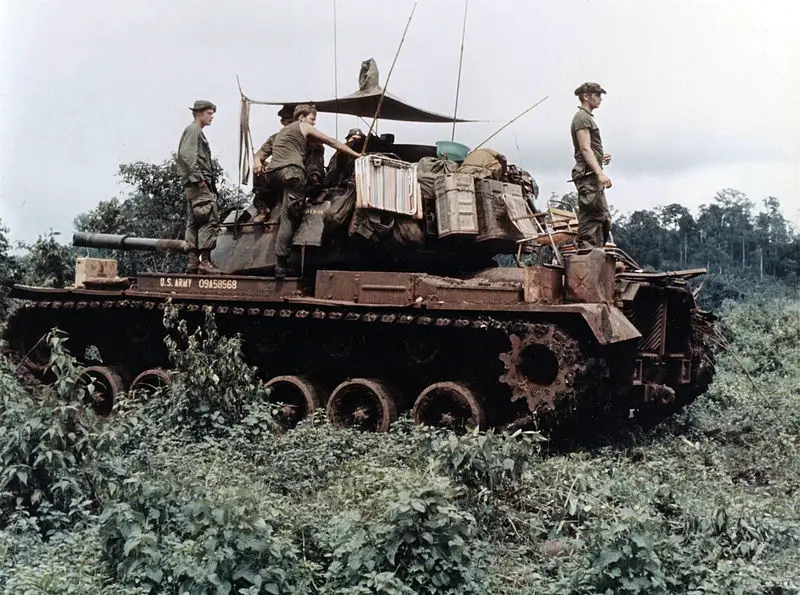
In order to direct the Marines, you need to be brilliant at the fundamentals. If an officer isn’t capable of running three miles within 18 minutes, shoot straight or quickly call in weapons support, the Marines he requires to finish these tasks won’t respect him. Nevertheless, war is filled with unplanned danger and demands that leaders get the easy things correct.
However, with that being said, it is insufficient to have competence alone. As it was once said by Teddy Roosevelt, “no one cares how much you know until they know how much you care.” But, this doesn’t signify that officers should treat their juniors as friends. But, as teachers, they enable them to develop into their roles and become real in their own right.
Also, the best leaders have a conviction. Which means saying your rules and abiding by them, without favoritism. In military language, these are known as “flat-ass rules” –rules that apply to everybody all the time. An officer who represents this type of conviction has an edge to win the most essential campaign of all – the battle for his men’s best interest.
3 – Mattis controlled the US attack on Iraqi troops during the First Gulf War.
Mattis had used 18 years in the military as of 1990. Which made him a “totus porcus” or “full hog” – Marine which is a military man in every aspect. He was promoted to the rank of Lieutenant Colonel, he had lately been the commander of the 1st Battalion of the 7th Marine regiment. It wouldn’t be long before he directed its men into a new fight.
On the 2nd of August 1990, Saddam Hussein the Iraqi dictator attacked neighboring Kuwait country which is a small oil-rich state controlled by Iraq. Hussein thought that no one would help Kuwait’s. However, he was mistaken. Three days after the Iraqi attack, President George H.W. Bush said to reporters that the US would not permit such behavior of aggression.
That evening, Mattis got a call from his regimental commander. The First Gulf War had started, and America was going to the fight– it was time to stay and deliver.
The 1st Battalion was the first-ever unit to participate in the Iraqi army and start the campaign to release Kuwait. What was their aim? Break Iraqi “difficulty belts” – minefields protected with barbed wire, defensive trenches, and bunkers – and create a corridor for the US Army to enter the country.
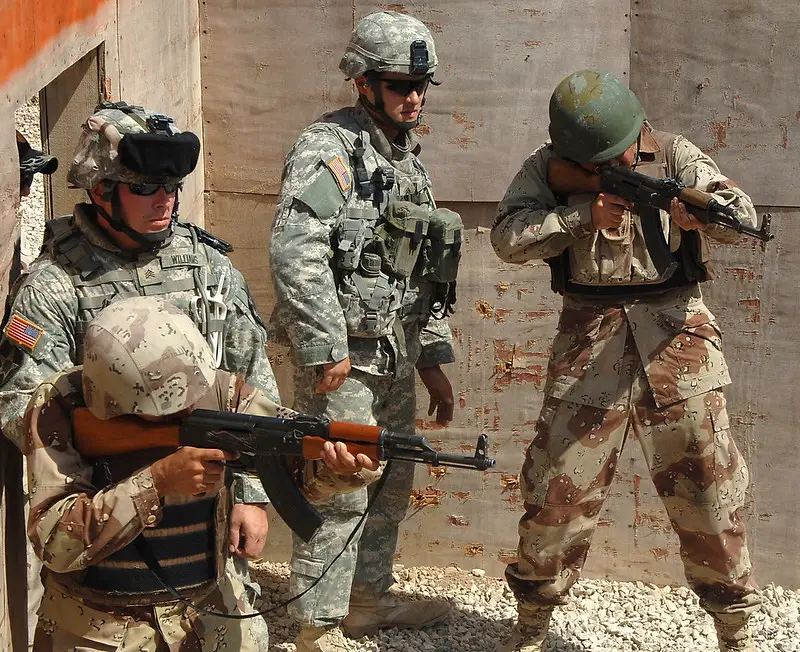
The attack started on the 24th of February, 1991. Mattis was in charge of a force of about 1,250 Marines and 18 tanks. Breaking through Iraq’s defenses took 21 minutes during war game practices in the Saudi Arabian desert the former year. It only took the 1st Battalion eleven minutes on an actual day.
Mattis measured his Marines’ progress through the hatch of an armored command vehicle. His training and drills were worth it– it was a defeat. A small number of Iraqi soldiers provided over half-hearted resistance. More persistent units were burnt in concentrated artillery fire and air support.
At the end of the day, more than 20,000 US troops had gone through the corridors that were opened by Mattis’ men. Three days after, Hussein’s forces were in confusion and asking for a withdrawal. On the 28th of February, Kuwait had been freed. None of Mattis’ marine unit died in the fight.
The First Gulf War was seen as an exemplary military campaign to Mattis’. The US had precise goals and used all required action to accomplish them. After their win, US forces went back home instead of getting stuck in unending fights. Forthcoming US wars would be really different.
4 – Obsolete strategic thinking signified that Mattis had to hold on before going into the fight with Al Qaeda.
On the 11th of September 2001, the morning began like every other morning. Mattis had newly been promoted to deputy commander of the I Marine Expeditionary Force or 1 MEF. While he was driving to his unit’s base in Camp Pendleton, California, the radio stations began broadcasting that an airplane arrived at the World Trade Center in New York.
Mattis immediately deduced what had occurred. His first assumption was that they got through. His second assumption was that this was caused by Al Qaeda – an Islamist terror group that started the war on America during the mid-1990s and planned the attacks on US targets across Africa and the Middle East.
American intelligence was aware that Al Qaeda’s leader Osama bin Laden, was being invited by the leader of Afghanistan’s Islamist Taliban government, Mullah Omar. On the 7th of October 2001, President George W. Bush commanded airstrikes against Al Qaeda and the Taliban. 1 MEF was sent on a war front and sent to Egypt to wait for orders.
Mattis, as well as his men, were anxious to join the fight and retaliate the fatalities caused on the 11th of September. However, there was a problem. America’s leading general named Tommy Franks didn’t trust that the seaborne Marines had anything to do in the war in Afghanistan. He said during a meeting that, “there’s no uncertainty about it, guys – this sonofabitch is surrounded by land.”
Mattis assumed that that was an obsolete opinion. Why? Because the Marines didn’t require literal beaches to land troops. Their long-range helicopters enabled them to open bridgeheads – safeguarded locations inside opponent territory – in any part of the country in the world.

No one listened to his disagreements, except Vice Admiral Willy Moore who was the commander of the US Navy’s Fifth Fleet in the Persian Gulf. Moore was aware that American airstrikes were trying to move the Taliban and Al Qaeda forces to the south. Incapable to grasp Kabul, Afghanistan’s capital, a city that had never been successfully protected, they had withdrawn to the country’s second-biggest place– Kandahar.
If they were permitted to dig in during winter, Moore asserted that a spring attacking would result in a bloodbath. The only solution was to attack at that moment before Kandahar could be reinvigorated. The plan the two men devised was easy in theory as it was difficult to accomplish. They would take 4,000 Marines over Pakistani airspace, put them on land that has a dusty plain 90 miles southwest of Kandahar, known as Rhino, and create a new front in the war against terrorism.
5 – Mattis assisted knock down the Taliban in Afghanistan however was denied consent to go after Bin Laden.
In November 2001, a few days after Thanksgiving, Mattis was on the deck of a helicopter in the Arabian Sea near the Pakistani coast. He saw as Marines test-fired their weapons into the water and loaded CH-53 helicopters. Centcom – US Central Command – gave the go-ahead. The aim was to create a bridgehead in southern Afghanistan.
The first troops arrived at 9:00 p.m. on the 25th of November. In one hour 170 soldiers were in a place to protect the landing location. The next day at dawn, 400 extra marines armed with gun trucks had joined them. That was the biggest amphibious attack from the sea in history. The effect was Camp Rhino, one of the war’s most essential bases.
It was an upsetting misfortune to Al Qaeda and the Taliban. They had predicted on drawing down their forces in the north and creating a defensive cordon in the south to prevent an attack. Their opponent was now within close distance of their temporary capital, Kandahar. Overnight, a situation of grim hope had turned hopeless.
The Northern Alliance, who was the Taliban’s Afghan enemies still had energy. Afghanistan’s first post-Taliban president, Alliance commander Hamid Karzai, later said to Mattis that he heard of the Camp Rhino as his forces joined on Kandahar. After he viewed the headline in the digital edition of the New York Times, he got out and screamed to his troops that they won the war. By December, the Taliban had truly been defeated.
Although it was a win, Mattis was unhappy. Bin Laden escape and was hiding in Tora Bora, a cave close to the Pakistani border which had protected insurgents during the Soviet attack of Afghanistan in the 1980s. Mattis’ Marines were told to start the charge, however, Centcom commander General Franks told them to remain in Camp Rhino.
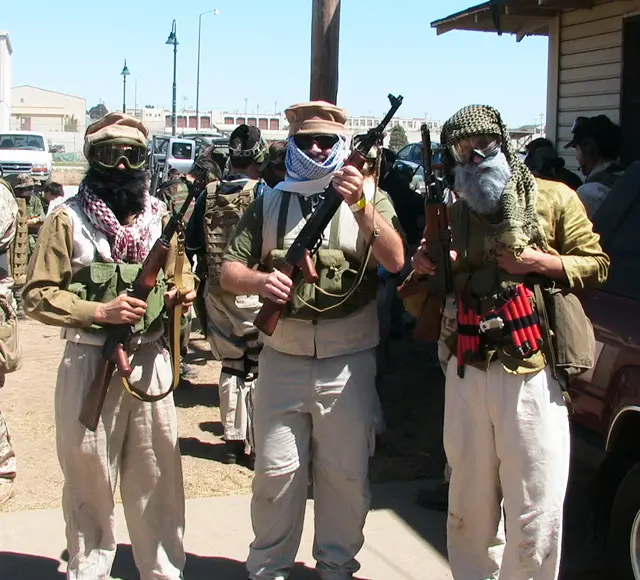
What was his reason for that? The US should not make the Soviets’ mistake of getting caught up in an insurgent war again. As Franks said it in his diary, there was “nothing to achieve by lumbering around those mountains with armor battalions pursuing a lightly armed enemy.”
Mattis signified that he wouldn’t make use of the armor, however highly mobile, helicopter-borne Marines. He was repealed, and President Bush surrendered to Franks. The chance to take bin Laden was failed. It would take another decade before they saw another opportunity.
6 – Mattis directed his Marines into Iraq in 2003, in spite of his personal doubts about the war.
During early 2002, Mattis went back to Pendleton, California. A newly promoted two-star Major General now led the 1st Marine Division. There was a bit of time to ponder over the lost chance to go after bin Laden in Tora Bora. The US was preparing to take another old enemy – Saddam Hussein.
While he was invited to control the 1st Marine Division, a storied unit that had worked with division in Japan, Korea, and Vietnam, Mattis was uncomfortable about the thought to attack Iraq. Sanctions made the country’s economy fall and the US was in charge of the Iraqi airspace. Although Hussein did have chemical weapons – the government’s reason for the forthcoming war was that Iraq was restricted. Was it actually a threat?
Mattis realized that he wasn’t in the position to answer such a question. As a military officer working for his country, his duty was to carry out the verdicts made by elected politicians either they were wise or foolish. And that’s was what he did. In August 2002, he told his officers to put their domestic matters in order to make peace with their God and get ready for war.

For the next seven months, Mattis and his senior staff practiced elegant war games on a huge map of Iraq that was on the airplane deck of the aircraft carriers. The aim of these activities was to make sure that his Marines were adequately supplied and that humanitarian aid could go to civilians once they finish fighting.
Mattis predicted that it would be immediately. A retired general named Tony Zinniand who was a mentor to Mattis teased that he would deny his protégé if he didn’t go to Baghdad in six weeks. Putting the Iraqi army aside meant to be a breeze. The actual task was what happened next.
On the 20th of March 2003 which was a day the official start of Operation Iraqi Freedom, Mattis went to Iraq. His Marines had made fast progress. The biggest fight happened three weeks into the campaign as they got to Baghdad, with a group having 81 deaths and injuries all in one night.
Regardless of the resolute resistance of its soldiers in the capital, the Iraqi army was unable to withstand for long. On the 12th of April, Saddam Hussein had been overthrown, and US forces were in charge of the majority of Iraq. As Zinni anticipated, military triumph had been rapid. Also, he was correct that this was only the start.
7 – The poor arrangement led to the estrangement of Iraqi soldiers and civilians alike.
A confusion happened in Iraq as Saddam Hussein’s regime fell. Police officers vanished from the streets, water and electricity failed. Tensions among religions of Iraq’s popular Shiites and minority Sunnis threatened to intensify into a civil war. The US had succeeded in the fight. At that moment, it would need to maintain the peace.
The Iraqi army was the solution. Why was that? Because its conquest left a lot of skilled and battle-hardened young men at loose ends, with no works or prospects. Just like a lot of US commanders in the field, Mattis though that this was a calamity waiting to occur. If actions are not taken instantly, someone would eventually turn this ready-made insurgent force against American troops.
One of Mattis’ senior officers created a strategy to predict this nightmare situation – pay Iraqi soldiers to go back to their barracks and wait to be put into a new Iraqi army. Mattis approved, however, Paul Bremer who was the leader of the provisional authority created by the US to supervise the reconstruction of Iraq, didn’t approve. He decided to disperse the Iraqi army and prohibit members of the ruling Baath party from having a spot in the public office.
Bremer’s policy didn’t make a distinction between diehard Baathist loyalists and opportunistic officers, engineers, and technocrats who had entered the party to improve their occupations. It was a significant decision that would put a few of the country’s most skilled– and risky – men against the US.
However, there were other mix-ups as well. Military commanders such as Mattis were told to arrange for local elections in the regions their forces were controlling. This was a sluggish and complicated process, however, they were making progress. Afterward, the provisional authority unexpectedly pushed for instant elections. Mattis as well as his colleagues hesitantly accepted and advised tribal and local leaders to reassure fast elections in their communities. Once again, when the authority changed the option and moved the elections, the military leaders had to awkwardly explain this setback.
Finally, Mattis went back to the US. He had aided the removal of Saddam Hussein’s dictatorship; however, the future of Iraq wasn’t sure. The British military strategist named B. H. Liddell Hart once wrote that the purpose of war is to make a “better state of peace.” Mattis departed from the country uncertain that he had done that.
8 – Plans of both force and de-escalation were left early in postwar Iraq.
Mattis wrote a letter in February 2004 to both the men and women of the 1st Marine Division to tell them that “we are going back to fight.” Since his withdrawal from the former fall, in Iraq things went from bad to worse. A new group referring to itself as Al Qaeda in Iraq – AQI – was keen on increasing riot in Anbar, which is a province that was full of the Sunni in the west of Baghdad.
Controlled by Abu Musab al-Zarqawi, AQI was established in Anbar’s two biggest cities, Ramadi and Fallujah, and was fighting against American troops and rival religious groups. A month before Mattis got to Anbar, one of Zarqawi’s suicide bombers murdered 23 Iraqi police workers in Fallujah. It was his duty to put a stop to these riots.
How exactly? Mattis tried to de-escalate the condition and told his troops to act as they would do in the US, instead of arrogant dwellers; that included taking off their sunglasses when they are talking to citizens, seeking for approval to go into homes instead of kicking doors down and taking their fire when civilians were around– anything necessary to evade pushing away normal Iraqis.
But, Mattis’ superiors saw things in a different way. While commanders on the ground were sure that they could solve the issue with this plan, politicians in Washington were frightened. During late March, when a group of American contractors was suddenly attacked, their burned corpses were hanged from a bridge in Fallujah, President Bush summoned for a forceful reaction. He said the US has to be “tough as hell.” Fallujah was being aimed at by a gun.

As it was indicated by Mattis, attacking the city might strengthen local support for the guerrillas. However, once more, he set his personal views aside and was set for the job he had to do. He had just one demand which was that the attack must not be stopped once it had started.
This demand wouldn’t be approved. On the 4th of April 2004, Marines went to Fallujah. This caused a domino response, and fighting went across the country. Media images of civilian deaths from the city went around the world. It was a lot for the United Nations, which threatened to remove its representatives from Iraq completely if the attack was over.
On the 10th of April, the 1st Marine Division had guerrillas on the run. Mattis told the Centcom that he could end Zarqawi off completely. He was commanded to stay still.
9 – The early departure of American forces from Iraq created the way for ISIS.
Mattis went back to Iraq during early 2006 after a two-year break from the front as the commander 1 Marine Expeditionary Force. The situation in Washington was bad, and politicians said that the Iraq war was unsuccessful. Mattis was resolute to show that they were wrong.
AQI’s rule in Anbar didn’t only threaten American soldiers, however, it also threatened the communities living in the province. Mattis and his fellow commanders nurtured relations with tribal leaders during the summer of 2006. Both groups needed AQI to leave, however, none was certain they could trust the other. Little signs of friendship such as offering sheiks with Marine officer dress swords when they visited the US, had massive symbolic significance.
These bottom-up relationships between local leaders and US battalions set the basics for the Anbar Awakening which is a rearrangement of Sunni leaders in the province that led to them being in conflict with AQI and the US. Mattis was assured by the end of that year that both Anbar and Iraq could be alleviated. As he said during a press interview, “I think it will take like five years. During that period, we will notice deterioration in opponent efficiency.”
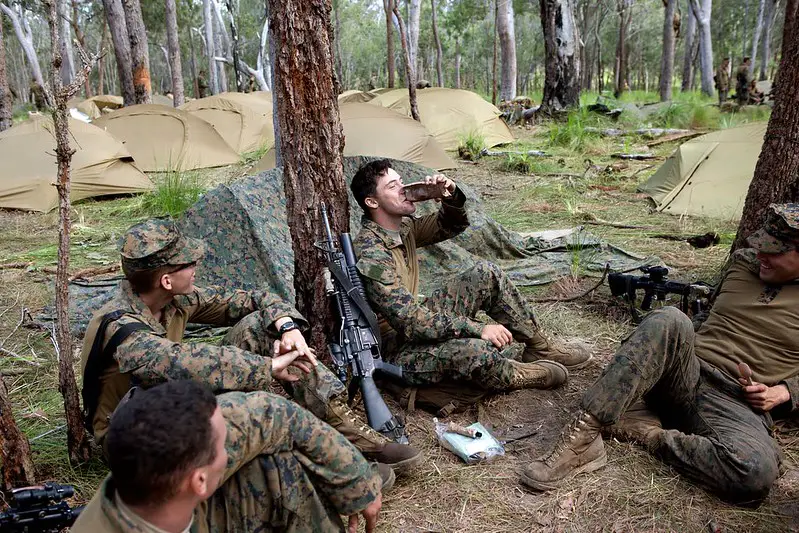
He was correct. The American war eventually accomplished sustainable peace and created a feasible Iraqi state during late 2010 after putting in seven years of blood and treasure in Iraq. That created a question – what is next? Mattis knew that American intelligence projected commotion and civil war if troops instantly withdrew. US troops were the ones keeping Iraq together – and once you take them away everything will crumble.
However, President Obama was resolute to stop the war for good. He broadcasted in October 2011 that the entire US troops would be departing the country during the end of the year, assuring to leave behind a “steady and independent Iraq.”
However, the truth was really different. Iraq went back to war a few months after the withdrawal. The marginal group of Sunni appalled against the Shiite-dominated central government, and the new Iraqi army showed that they were unable to hinder them. In 2014, a new Islamist group named ISIS arose from the commotion and they created their own deadly caliphate. It would require several years of fighting, a lot of deaths and the despair of millions of innocents to roll back ISIS.
The whole thing projected and avoidable.
Call Sign Chaos: Learning to Lead by Jim Mattis, Francis J. “Bing” West Jr. Book Review
In 1970, Jim Mattis became part of the Marines during a hard time for the military. Trying to resolve anti-war protests, the US left conscription and changed to an all-volunteer force. That needed fresh leaders. Mattis got to the incident and immediately progressed through the ranks. He controlled the first Marines to enter Kuwait in 1990. This was a model military campaign, different from the two wars after Mattis participated in – Afghanistan and Iraq. Despite the US efforts, these wars unsuccessful as a result of outdated thinking, bad calls, and mix-ups
